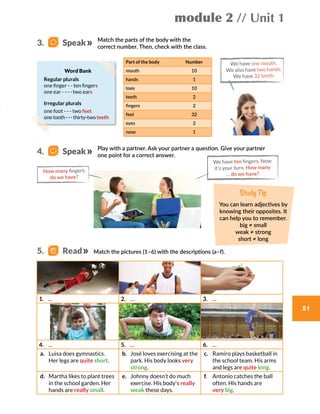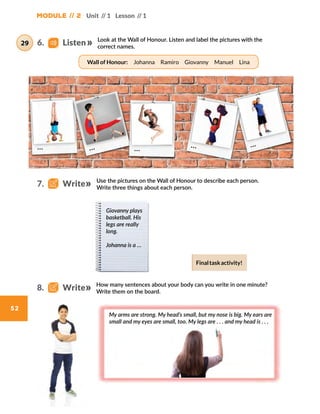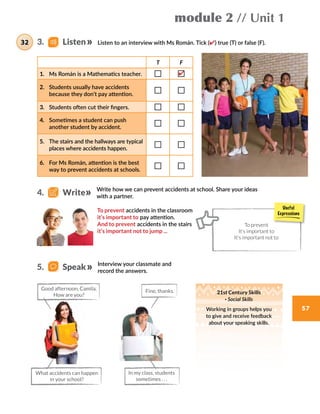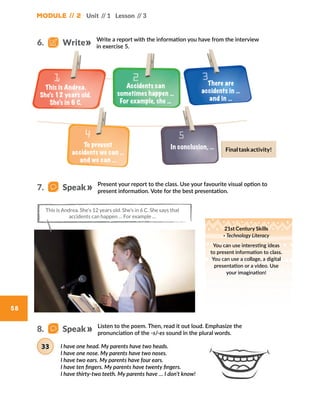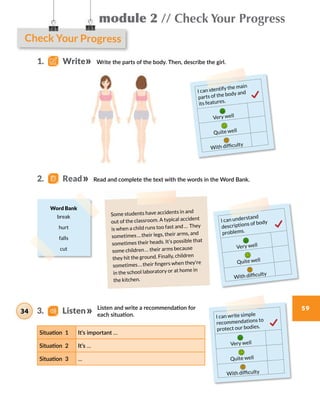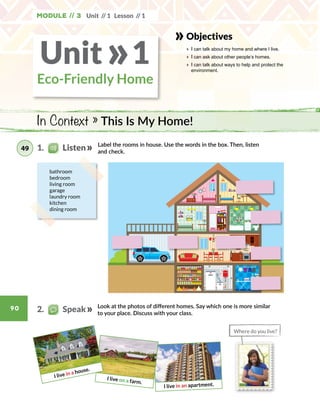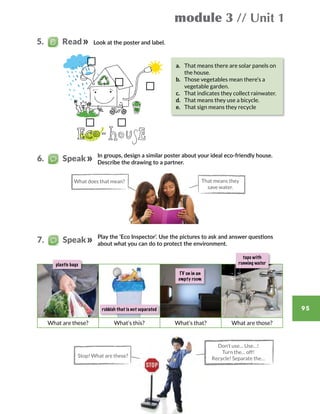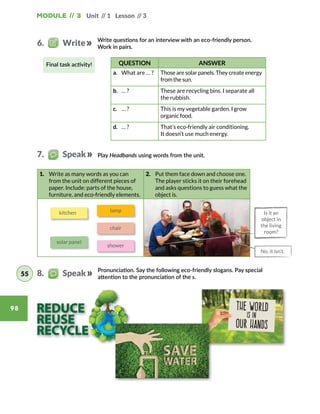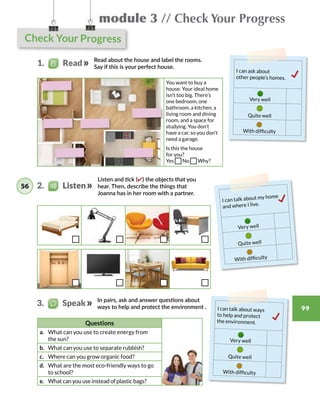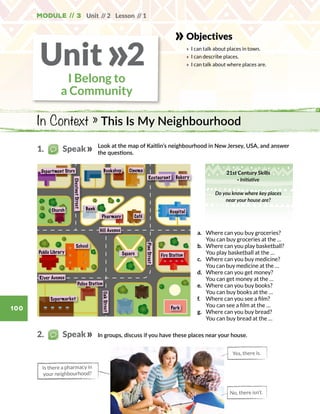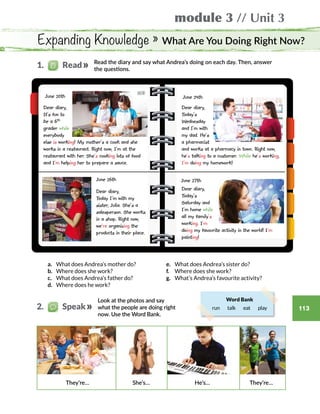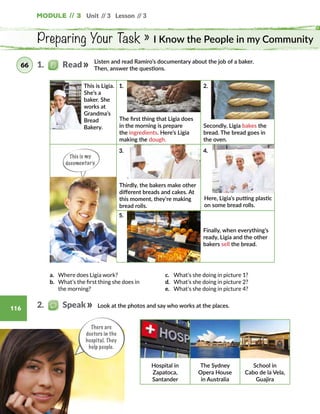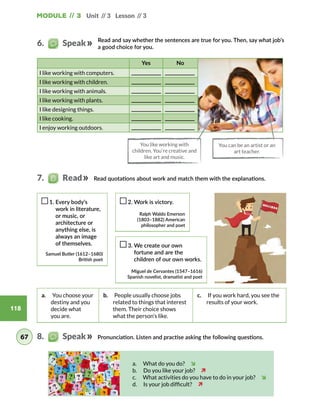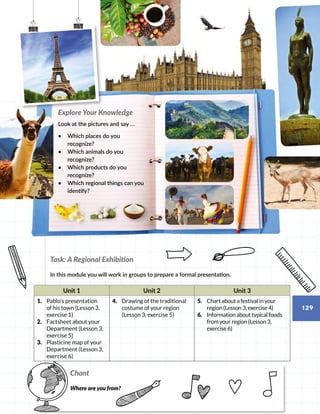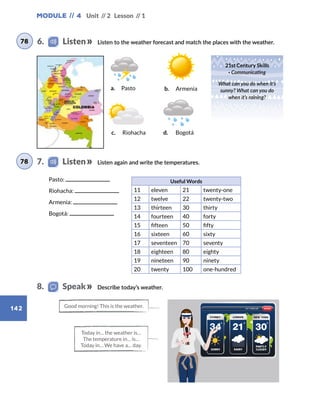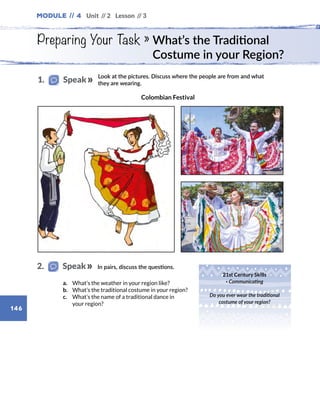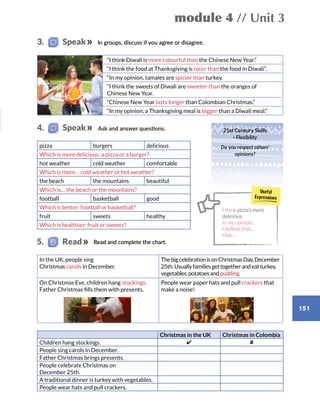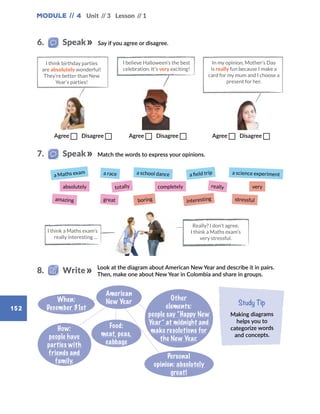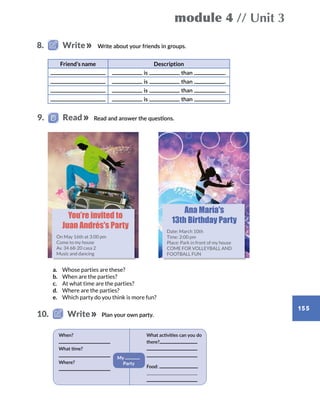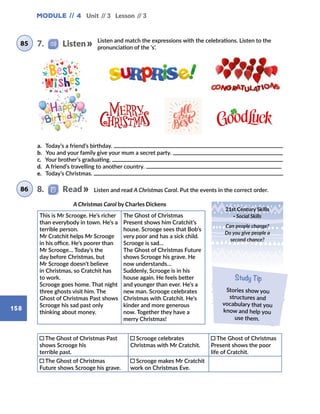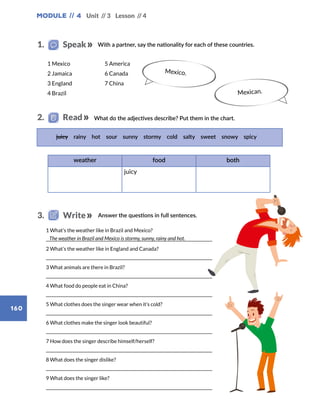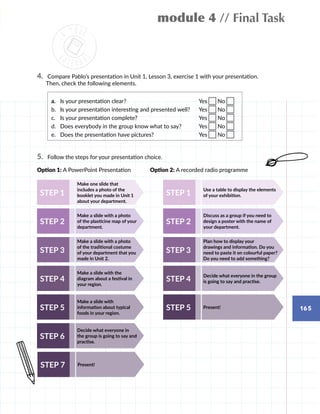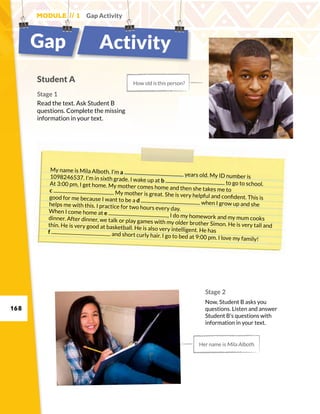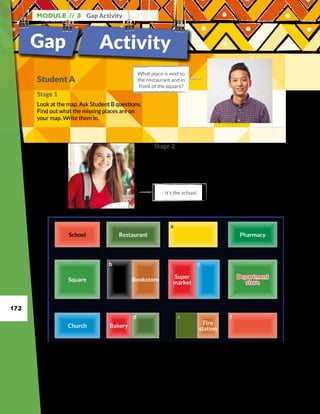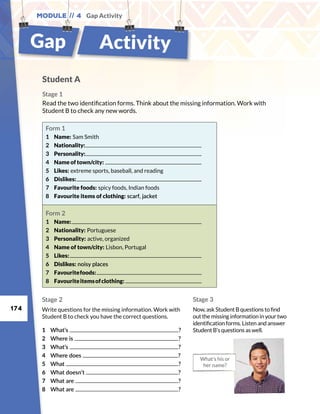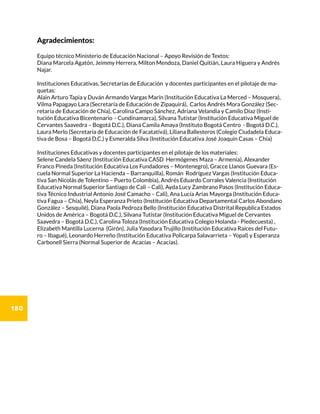This document is the student's book for 6th grade English language learners in Colombia. It is published by the Colombian Ministry of Education as part of their Colombia Bilingüe program. The book contains 4 modules to teach English through topics related to democracy and peace, health, sustainability, and globalization. Each module has 3 units of lessons, a review section, project, and evaluation. Accompanying materials include a workbook for student practice, audio tracks on the ministry's website, and interactive games and digital versions of the content online. The goal is for students to improve their English communication skills while learning about their culture and other countries.
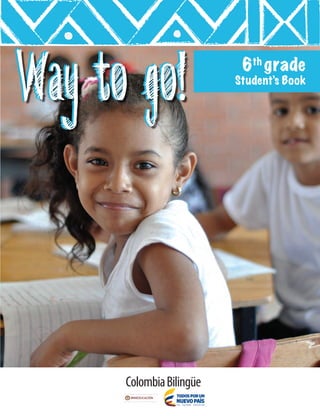




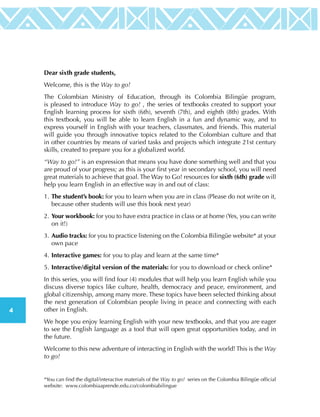










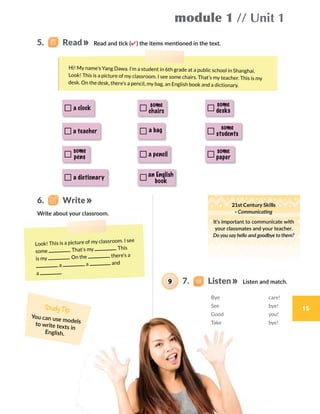

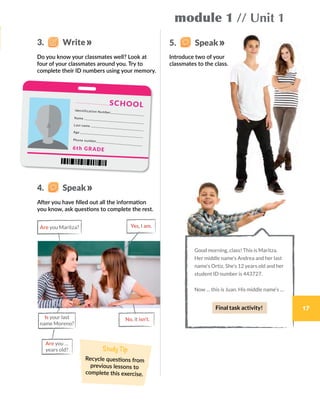



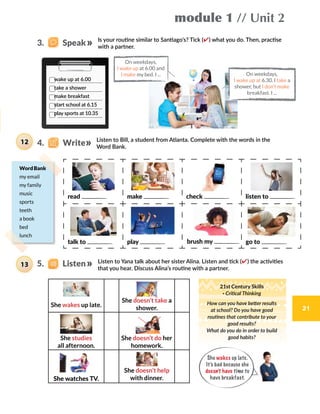


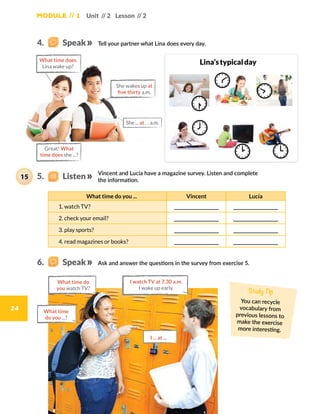


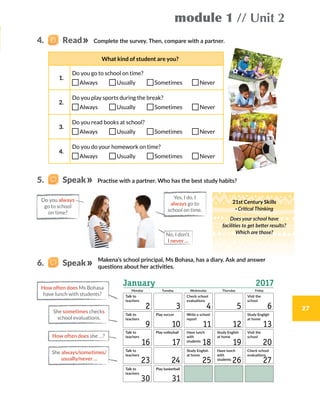



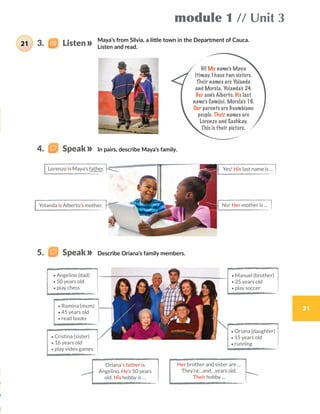

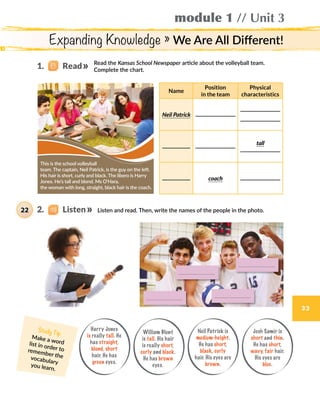

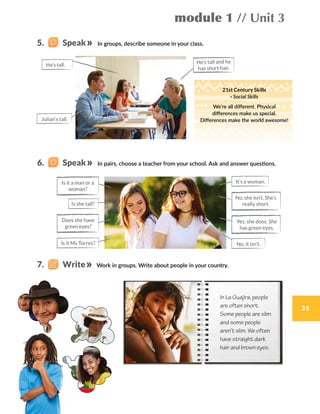

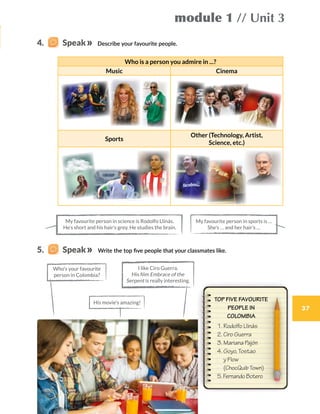




![42
Module // 1 Review
[Up to 4 players] Take turns to roll the die and move the number of
squares. Do or answer what it says in each square. If the answer is
correct, stay on the square. If the answer is incorrect, miss a turn.
The first player to get to the FINISH square wins.
42
1. Complete: I ———always happy.
2. Name 5 physical description words.
3. Give 3 greeting expressions.
4. Describe your mum’s routine.
5. Give 3 expressions teachers use in the classroom.
6. What time do you get up?
7. Name 5 colours.
8. Describe your daily routine.
9. Say the name and age of two classmates.
10. Talk about your family.
11. Give 3 good habits at school.
12. Name 4 frequency expressions.
13. Talk about a person you admire.
START
Question 4
Bonus
roll again
Go back
1 space
Go back
1 space
Question 26
Question 1
Question 2 Question 3
Question 23
Question 24
Question 25
Bonus
go to the finish
Question 27
Miss a turn
Question 28
Question 29
Question 30
Question 22
Bonus
exchange
places
Question 21
Go back 2
spaces
Review Race
FINISH](https://image.slidesharecdn.com/studentsbook6-200711204923/85/Student-s-book6-44-320.jpg)








